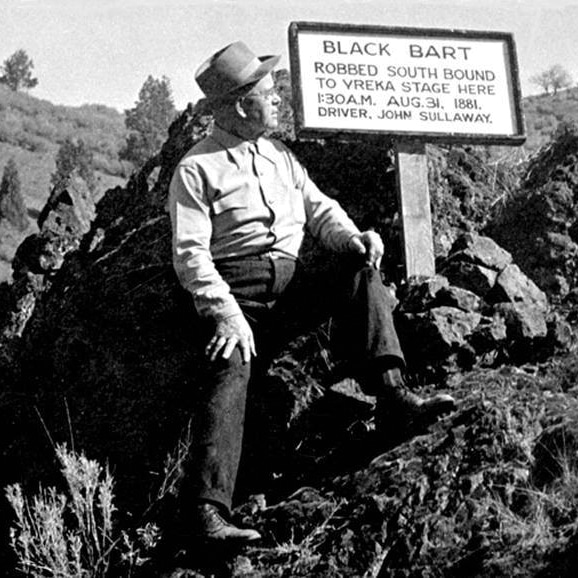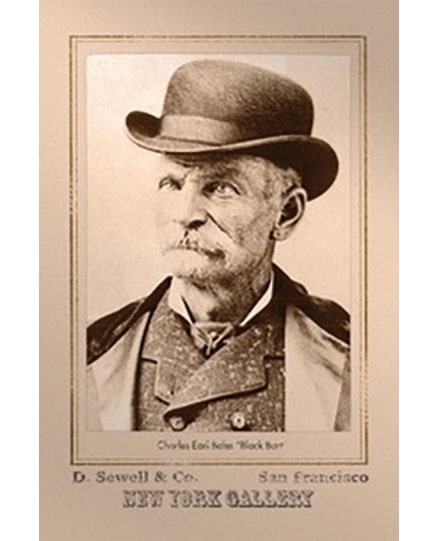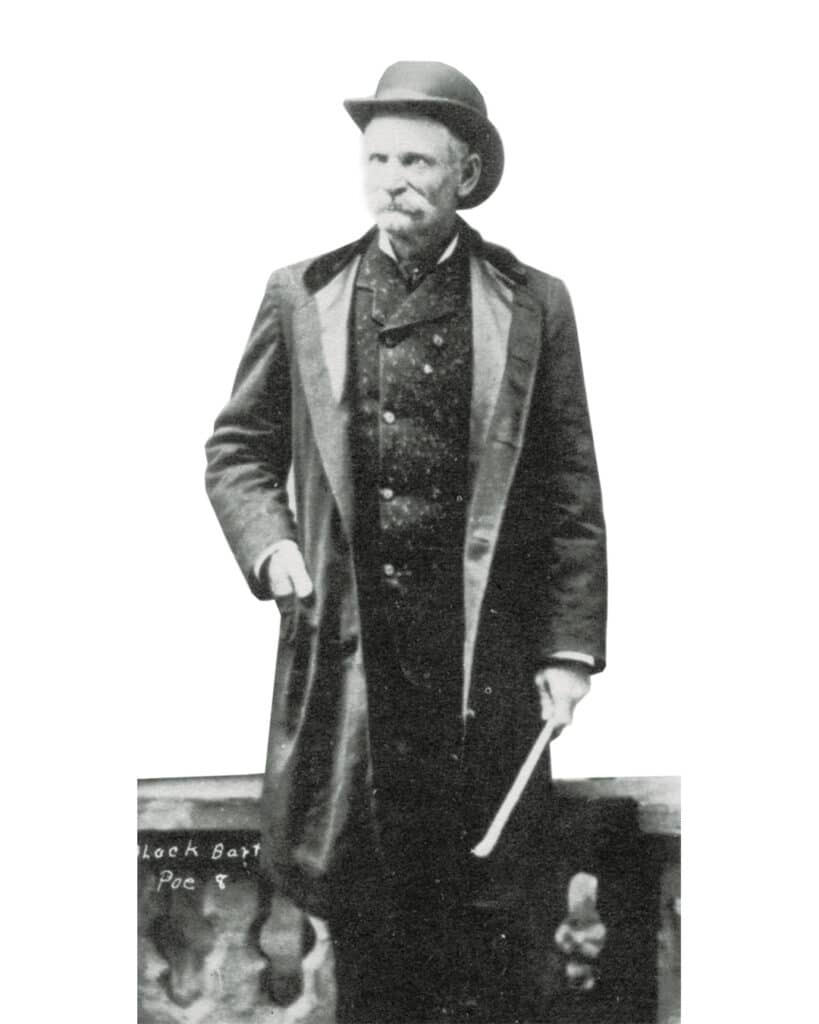Gentleman Bandit
Wells Fargo Stage Bandit Black Bart…
Charles Boles was many things. A veteran. A prospector. A teacher. A poet. He was also the most successful Wells Fargo stage bandit in Wild West history, pulling off 29 oddly polite heists in Northern California under the name Black Bart – without ever firing a gun. “He always used a plugged shotgun, wore a flour sack mask and linen duster. He also left poetry at the site of several of his holdups, which he would sign as the PO-8 or Poet,” says author and educator Gail Jenner, who also published a book on the outlaw. “His appeal really seems tied to the fact that he had a certain ‘morality’ for a thief, saying please and thank you, and was often called a gentleman. He reportedly never held up a passenger, instead wanting only the Wells, Fargo & Co.’s money box bolted to the floor under the driver’s seat. In fact, one story goes that when a woman passenger held out her handbag to him, he quickly told her that he had no desire or intention of robbing a woman.”

The eventual masked bandit actually started life out in New York, the son of hard-working English immigrants who were known as “barn raisers.” But his restless nature and dislike of manual labor compelled him westward with the Gold Rush. “He originally traveled to California with two of his brothers. But after a not-too-successful stint at mining and the death of one of his brothers, he bounced around, eventually ending up in Illinois where he worked as a schoolteacher for a time. He also met and married, and had some children. But then, when the Civil War broke out, he enlisted,” explains Jenner. The decision ultimately prepared him for his future escapades. “He served in the 116th Illinois Volunteer Infantry and fought in several significant battles under General Sherman, including Vicksburg and Kennesaw. He
was wounded, though not seriously. But it’s believed that the years he spent marching ultimately helped him out later with the ability to cover miles on foot between holdups.”
It was after the war that Boles eventually spiraled into a life of crime. As Jenner details more thoroughly in her book, Boles bounced from one job to another, including a stint in Montana after hearing rumors of another gold rush. “But just like in California, Charles really wasn’t a successful miner. There were some rumors that suggest he did manage to scrape together some gold to send home to his wife. But as luck would have it, he sent it by Wells, Fargo & Co. and the stage got robbed, and he lost his gold. That’s possibly why he held a grudge against Wells Fargo, and why he later chose to rob only their stages,” says Jenner.

After nothing material to show for all of his endeavors, Charles finally headed back to San Francisco and just started living as if he were a man with means. What no one in high society realized is that he was funding himself by robbing stage coaches. “Having been raised in a well-educated family, he was likeable and intelligent, it was relatively easy for him to merge with the elite, and people liked him. He led people to believe he was a ‘mining engineer’ who had to, on occasion, go inspect his mines, so no one suspected him of being the notorious Black Bart. In Siskiyou County, he held up The Roseburg to Yreka Stage three times, in June 1875, September 1880 and again in August 1881. He also held up the Yreka to Redding Stage in September 1882. In fact, a plaque was placed along the site on Anderson Grade where he held up the stage in 1881, but after the construction of Interstate 5, that plaque was removed and has since been lost to time,” notes Jenner.
Eventually, a reward was issued for Black Bart’s capture and conviction, and he was apprehended after his 29th robbery on November 3, 1883. “It was actually the same site as his first holdup in 1875,” says Jenner. “During that hold up, he was shot in the hand by a young man who had seen him while rabbit hunting near the stage coach. And as Boles fled the scene, he dropped his handkerchief, which had laundry mark on it – F.X.0.7 – that could be traced back to him. He was quickly tried and convicted, but he pleaded guilty to only one to one of his 29 crimes.”

Jenner believes Charles Boles still appeals to people today because he was filled with so many contradictions. “We really would consider him a ‘ne’er do well,’ you know, someone who wanted more than he had and didn’t have a way to achieve what he really wanted, which was wealth and the satisfaction of duping Wells, Fargo & Co. But he never made a scene in public, and was never involved in a shoot-out as many western outlaws were. Even in prison, he was found to be intelligent and did his work. He had many admirable traits, yet left a trail of mystery that much of which to this day remains unsolved.” •
“Black Bart: The Poet Bandit” by Gail L. Jenner is available at several local Siskiyou County stores, as well as on Amazon.




